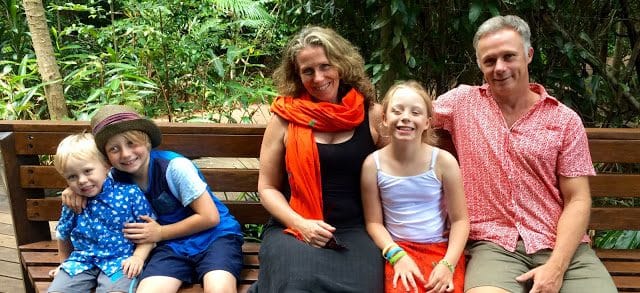Exploring ways to eliminate plastic dependence means rethinking the ways we have done many things in our daily life. It is an incredibly big challenge because throw away plastic is just everywhere – it’s such a ‘normal’ part of our society and it’s absolutely everywhere. I am determined not to be overwhelmed though. Little by little making our household wants to make lasting changes.
 |
 |
| One of this week’s experiments was testing out and making beeswax cloths. |
It doesn’t matter where you live, plastic waste is everywhere and it persists. It is a global problem. Most plastic waste still goes to landfill where it remains for hundreds of years. Lots too ends up in the rives and oceans. Once it’s in the oceans, it is sent by global currents around the world – leading to accumulations like the Great Pacific Garbage Patch.
As part of our homeschooling activities this week, we spent some time this week exploring waste and the oceans’ multiple garbage patches. On recommendation from a reader, we explored the Take 3 campaign (which the kids have now committed to doing – picking up at least 3 pieces of rubbish each time we go out), watched some of really interesting video clips and had great discussions about plastics.
The kids were particularly affected by the impact plastics is having on the marine animals and sea birds. We delved a bit more deeply and I found an article that described how 90% of seabirds have eaten plastic and 60% still have it in their gut. This compared to less than 5% in 1960. Plastic in birds guts leads to eat to malnourishment and possible death. It is predicted that by mid-century almost all seabird will have plastic inside them.
The ocean is become a plastic soup.
Another issue we came across was the insidiousness of microbeads – the tiny plastic balls that have become pervasive in the cosmetics industry. They have replaced tradition ingredients such as ground nut shells or salts.
I made a commitment some time back to not use any products with these. I make my own scrubs – ground oatmeal which is great for sensitive skins, or plain bicarb/baking soda. I encourage you to check your products and see if you can avoid these microbeads.
Apparently up to 95000 microbeads are released int the environment with every single use of personal care products. The beads are washed down our drains into the sewage system and are so fine they pass through the filters and out to sea. Microbeads are now recognised as being a significant environmental problem and a major health problem. These beads are harmful to human health and accumulate in all kinds of fish and shellfish such as mussels, tuna, oysters, salmon and anchovies. They have even been found in plankton. Read more about them here and here.
 |
| Source: https://www.greenpeace.org.au/blog/microbeads/ |
In our investigations we also came across some very useful guides to eliminating many forms of plastic from the Ecology Center in Berkeley California.
The Eliminate Plastic Fact Sheet gives an overview of the problems with plastic, some simple actions to take and alternatives to the common plastics.
The Veggie Storage Fact Sheet is a great overview of ways to store your fruits, vegetables and herbs without the use of plastic.
We are so excited about all the steps we can take daily to contribute to positive change.



It's good that you are bringing the scope of this problem to our attention. I have seen the plastic bags floating in our water but had no idea about the extent of the damage to marine life.
I have added you to my blog roll. Your blog is so good. Really enjoying it.
Welcome. Thanks for sending me your message. It's always a delight to hear from people who are reading.
I really enjoy delving into the 'back story' to the issues we explore. I also thing it is so important for the children to see how everything is interconnected. Learning makes so much more sense when it is in context – they learn all sorts of skills by examining things that they are passionate about. They are involved in identifying the issues which concern them, asking the research questions and then coming up with positive way to take action to make a contribution – to make a difference.
Thank-you so much for this post. I knew plastic was a huge issue for our environment just didn't realize how bad. One of our goals this year is to become plastic and man-made fabric free. After reading this I hope to achieve this earlier than the end of the year.
Yesterday, we spent a day out up on the Sunshine Coast. So Beautiful! But, as we were driving across a bridge, a plastic bottle flew out of the window of the car coming in the opposite direction. Over the guard rail it went. The river below will take it to the sea. I'm not sure what it would take for the people in that car to change that sort of behaviour, but I do think blogs like yours are inspiring and offer advice and information to those willing to look.